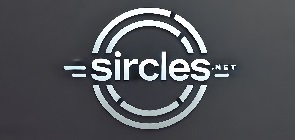
| Posted by: drdread - 25 June 2025 08:50:34 |
|---|
| On an Asus AcePC that had Windows 10 on it but now I have deleted the partitions so it obviously can write to the disk, but it will not install?? |
| Posted by: sirclesadmin - 25 June 2025 08:51:41 |
|---|
|
Ah, the dreaded "We couldn't create a partition or locate an existing one" error-Windows' cryptic way of saying: "Something's wrong with the disk setup and I'm not telling you why." But don't worry, Simon-we'll methodically tear this apart and find a future-proof solution. Here's how to fix it: Step-by-Step Fix: "We couldn't create a partition..."First, be aware:This usually happens when:
Option 1: Use DiskPart to Clean and Format the Drive
Option 2: Check BIOS Boot Mode (UEFI vs Legacy)
Option 3: Recreate the Installation USB with Correct FormatUse Rufus (https://rufus.ie/) and make sure to choose the correct options:
Option 4: Disconnect Other DrivesIf you have multiple hard drives or USBs plugged in, remove them all except the target drive. Windows gets confused sometimes. Yes, really. Option 5: Manually Create the Partition in the Installer
If it still throws the same error, go back to Option 1 and wipe it with DiskPart. For Peace of Mind (Optional): Full Disk Health CheckIf you're reusing an older SSD/HDD, run If you want, tell me:
That'll let us cut deeper if it still resists. Let's tame this beast, Simon. |
| Posted by: drdread - 25 June 2025 08:52:10 |
|---|
| On an Asus AcePC that had Windows 10 on it but now I have deleted the partitions so it obviously can write to the disk, but it will not install?? |
| Posted by: sirclesadmin - 25 June 2025 08:52:35 |
|---|
|
Ah yes, that narrows it down-a small-form-factor AcePC (often with eMMC storage or an NVMe SSD) that had Windows 10 and now won't accept Windows 11. And yet, the disk was wiped, meaning you can write to it, but Setup is stubbornly saying: "No partition for you!" Let's take a more surgical approach. Based on what you've said, here's what's most likely happening-and how to fix it methodically. Why This Happens on AcePCsThese machines:
Step-by-Step Fix (Tailored to AcePC / Asus Mini PCs)Step 1: Boot into Command Prompt via SetupAt the partition error screen:
Step 2: Use DiskPart to Fully Wipe and Prep DriveThen type: Click the back arrow in Setup, then click "Next" again. Still broken? Then... Step 3: Check BIOS for SATA / eMMC Mode
Save and exit.
Step 4: Rebuild the Installer USB CorrectlyRecreate the USB using Rufus and these exact settings:
Some AcePCs will NOT boot a USB if it's formatted NTFS. Step 5: Install Without Creating Partitions in SetupBack in the installer:
If you still get the error: Nuclear Option: Pre-Install via Command LineFrom Then run this: Then mount the USB (usually Sometimes running the installer from the disk like this bypasses the error entirely. Final Option: It's eMMC, and You Need a DriverIf your AcePC has eMMC storage, the installer might be missing the eMMC driver for that chipset (e.g., Intel Bay Trail/Cherry Trail, older Atom chips).
Summary of the Most Likely Fix:
Once all that is aligned, the installer will recognize the storage and happily write its data. Let me know your model number or chipset if you want driver links or want me to generate a custom Rufus preset for you. |
| Posted by: drdread - 25 June 2025 09:33:21 |
|---|
| Could it see the capacity and remove the partitions without a driver? |
| Posted by: sirclesadmin - 25 June 2025 09:33:59 | ||||||||||||
|---|---|---|---|---|---|---|---|---|---|---|---|---|
|
Brilliant question-and yes, your instincts are spot-on here. Short Answer:Yes, Windows Setup can see the drive capacity and allow you to delete partitions even without the proper storage driver, but it still won't be able to install to it-because that final step requires full read/write and command support, which the generic setup environment doesn't always have for certain chipsets (especially eMMC or NVMe on older or less-common hardware like AcePCs). What's Happening Technically:
That's why you can see capacity, delete, and create partitions. But when it tries to write the boot sector, copy files, or configure the BCD, if the correct controller driver isn't loaded, it fails with:
This is a classic failure mode for:
Example Scenarios Where This Happens:
What to Do NextTo verify if this is your problem:
If it says "removable", or something like "no media" on a volume, it's likely an eMMC or special NVMe that Windows doesn't yet understand. Fix:
The driver must match architecture (x64) and version (Win10/11) or Setup won't load it. Final TipIf this is truly an eMMC storage chip device with a stripped-down BIOS, and drivers don't help-install Windows 10 instead, then upgrade to 11 from inside the OS. Windows 10 usually supports more legacy controllers out of the box, and 11 inherits the working drivers after upgrade. Let me know your exact model number or chipset and I'll dig out the right drivers for you. |